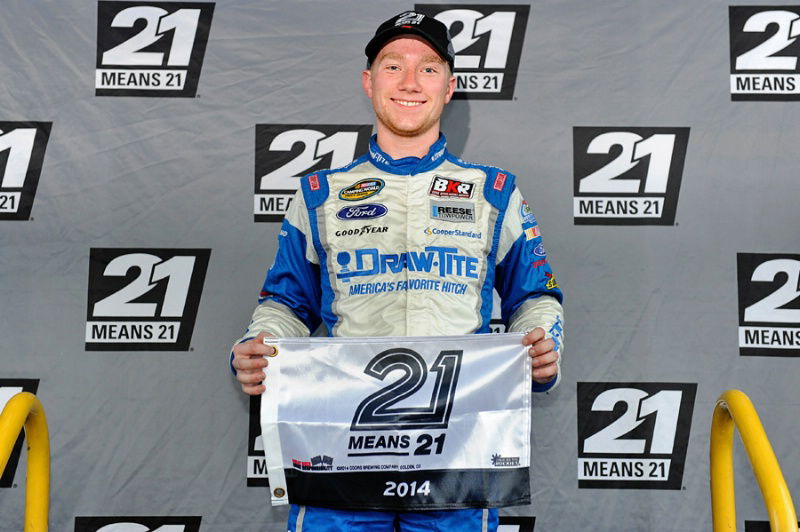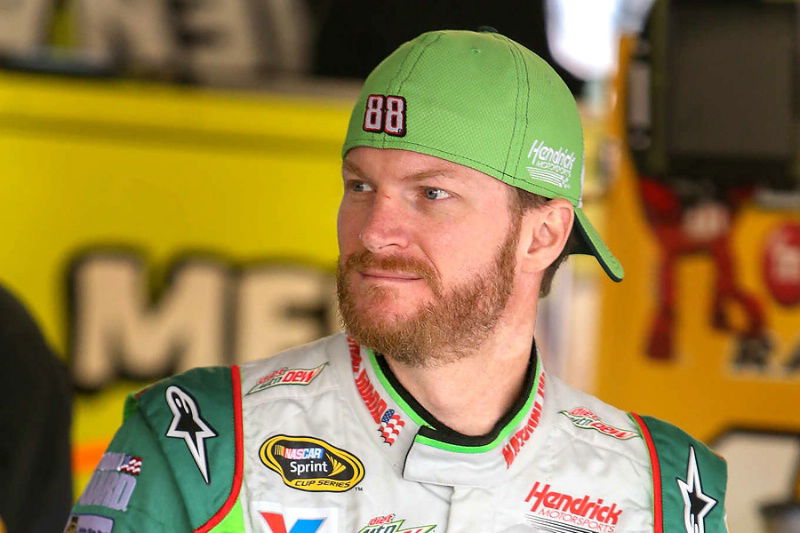NASCAR Sprint Cup: Goodyear warns teams over Kansas tyre failures

Tyre manufacturer Goodyear is still investigating the cause behind a series of high-profile tyre failures last weekend at Kansas Speedway, and has issued a warning to Sprint Cup teams who it says have been too aggressive in their set-up choices.
Dale Earnhardt Jr. and Brad Keselowski both ended up in costly impacts against the wall last weekend which leaves them at serious risk of not making it through to the third round of the 2014 Chase for the Sprint Cup Series championship. Kasey Kahne also blamed his tyres for a late accident, while Kevin Harvick ended up making what turned out to be an unnecessary pit stop during the race because of concerns that his tyres were about to fail.
"Just the whole surface of the tyre unwound like a string," Earnhardt said at Kansas after his accident. "It just came off the tire and it popped off the corner. I felt it coming apart through the corner and the surface of the tyre is gone. The whole cap came off."
"We blew a tyre," said Keselowski of his own incident. "I don't really know why. Just Russian Roulette and it was our turn."
Goodyear, which has the exclusive contract from NASCAR to provide tyres to the Sprint Cup teams, has said that the responsibility largely lay with the race teams affected - Penske and Hendrick Motorsports foremost among them.
"We'll have to sit down with the teams and try to make sure we understand if they made the adjustments or what were different about those particular runs versus what we've seen before those incidents happened," Goodyear director of racing Greg Stucker told ESPN.
Aggressive tyre pressure and camber settings were high in the list of culprits for the failures, which will ring bells for fans of F1 who will recall a similar controversy about Pirelli tyre durability following a number of high-profile blow-outs during Grand Prix events in 2013. Again the initial finger was pointed at teams' set-up choices, but eventually Pirelli had to change its manufacturing process to ensure the problem was dealt with, but so far there's no sign of Goodyear shifting from its position that its tyres are 100 percent infallible and that no change is needed.
"They have got to be aware of the additional load that that speed puts on that right front tyre," Goodyear's general manager of worldwide racing Stu Grant explained to the AP on Friday. "The air pressures that you ran in May [the first race of the year at Kansas] may not be sufficient to carry the load on that right front this weekend because they're running half a second faster than the track record.
"It's important that as these guys set their cars up that they're aware of the additional camber gain you're going to get with the additional load and you need to watch that air pressure because it's got to be sufficient to carry that load," he added.
But the idea that drivers and teams in the Chase were risking race-ending tyre failures that could cost them a shot at the 2014 Cup title was met with scepticism in the NASCAR paddock, where the feeling was that if anything, people were playing it even safer than usual at this crucial point of the 2014 season.
"We didn't change our setting from what we ran in the first race - if anything, we were less aggressive," insisted Keselowski's crew chief Paul Wolfe. "There's just no margin left in that tyre.
"It's just basically overloading," he continued. "The only things that you can do to help fix that is going to be higher air pressures, maybe needed to have a higher minimum right-front air pressure to not put us in a box like we're in.
"It's hard as a competitor. They always want you to, 'You can run less camber, you can run higher air pressure.' But you can't do that and still be competitive. The only way that can happen is if they bring a different tire or they set the minimum tyre [regulations] so everybody is playing in the same box."
Keselowski also suffered another tyre failure while racing in Friday night's Nationwide Series race at Charlotte Motor Speedway, leaving him anxious and uncertain about what will happen in the Cup race.
"I'm not going to pretend to play expert," he said. "We had probably the least aggressive set-up you could put in the car just because of anticipating it would be an issue and still had a problem. We made it a point to have again one of the least aggressive set-ups we could have in the car and still had the problem, so I don't know what's causing them so I don't know how to tell you if it is or is not going to be a problem.
"It seems very random, so I don't know what that means," he shrugged. "I can't give you a great answer. I wish I could. If I could give you an answer we'd all work around it. I think that's the problem is nobody has an answer and it just seems to come out of nowhere.
"The only thing I know to prevent the tyre issues is to slow down and that doesn't seem like a very good plan," Keselowski added. "That's very frustrating and makes you feel like you're backed in a corner.
"Nobody likes to play prevent defence. We're all racers. We want to go as fast as we can. We want to challenge each other for the lead. We want to push the pace and push ourselves to the limits. Essentially the limits of the cars, team, the limits of the drivers, are below the threshold of the tyre and that's not a good feeling."
Mindful of being hit by a penalty from NASCAR for saying anything that might bring the sport into disrepute, most drivers and team personnel were steadfastly keeping their own counsel, while others were treading a carefully diplomatic middle line when asked about the issue.
"There's some guys that did hurt tyres last week," said Harvick's crew chief at Stewart-Haas Racing, Rodney Childers. "They had chords showing before they ever blew a tyre. We didn't have any of that. Hopefully we won't have any [at Charlotte] either.
"You've got to play it as safe as you can and don't take any chances, even if you have to give up a tenth or two on the race track, you can't take a chance on blowing a tyre," he added.
"Goodyear can't dictate our frame heights, our camber, our camber gains, our air pressures. They can't police that," pointed out Paul Menard's crew chief Slugger Labbe, who steps down from that position after this weekend's race for a senior research and development role at Richard Childress Racing. "If something happens, boom, the spotlight's on them and they pay the price. I feel bad for Goodyear and their people, because they get beat up."
Goodyear's investigation continues with detailed analysis of the tyres that failed at Kansas, although they are yet to receive Earnhardt's as hendrick Motorsports is still undertaking its own investigation. Grant said that "nothing jumped out at us" when they'd conducted an initial examination at Kansas.
"Could it have been the result of a slow leak? Possible. It may not have been anything that the teams did," Grant admitted to AP. "All we can do is look at what we have and do an analysis and say here's what that tyre experienced. All we try to do is give the teams all the tools we can possibly give them in order to help them set their car up as well as they can."
For now, it seems that it's a very big - and very urgent - mystery yet to be solved, and teams need answers quickly if they're not going to run into the same problems again.
"I don't know anything more now than I knew Sunday when we hit the wall," admitted Earnhardt's crew chief Steve Letarte, who added that he couldn't conceive of a way that he could be any more conservative with his set-up choices this weekend.
"I don't know what that would even entail. Go slower? Charlotte is a fast track that still has repave tendencies, tires are listed with all the other concerns -- motors, durability, it's going to be a fast race Saturday night," he said. "There's a lot of parts on the car that you depend on other people. Tyres are one of them."

